You may recognize twining from its use in basket weaving. That is because basket twining is probably one of its most common modern uses. We are not talking about baskets, though. Weft twining is also used to make fabric!
When it comes to weaving, one common use of twining is to use it like hemstitch. Much like how hemstitch is used to start and finish off a weaving, weft twining can be used as a way to start out your weaving. That is not its only use though! It can be used for many other interesting and exciting things.
Learn how to hemstitch HERE.
Just like weaving, twining is not a new technique. It actually dates back to at least 30,000 BCE. Unfortunately, twined fabrics from that long ago no longer exist, but their evidence has been found in impressions around the world.
So how can you use twining in your weaving practice and how do you twine?
Twining is a versatile technique that you can use to create emphasis, as a whole fabric method, a functional technique, and more. For the purposes of the diagrams and images, I will mostly be using two different colors for twining. This will make the process easier to see. That being said, there are many times when you may want to use two colors for aesthetic purposes and I will go over that too.
Let’s get twining.
Flatten out/ space warp
When weaving on a simple frame loom or any loom that needs the warp to be spaced and flattened I usually use scaffolding.
Scaffolding is yarn that spans to each side of the frame and by using plain weave puts all the warp in the right place. This is a super simple and effective way to flatten out your warp.
We are not talking about scaffolding, though.
Twining on the other hand can do basically the same thing but with an extra twist (literally) and it has a bit more staying power when it comes to your warp. This little twist that lays between your warp yarns can help to make sure that your EPI doesn’t change because your warp has a mind of its own.
Both of the techniques are great to use as a removable base for your weaving. They function sort of like a header on a floor loom or rigid heddle loom.
Finishing
Just like you can use twining at the start of your weaving you can also use it at the end too! Twining is a simple way to end your weaving with a bit of flair, but not a lot of effort.
Unlike hemstitch, the twined yarn is not attached to your weaving to keep it in place, but instead acts as a barrier between your weft and the outside world. This is not a permanent solution and you will still need to secure your weft by employing some finishing techniques, but it is a good first step.
It will also give you a little extra security before you can get to finishing your weaving.
Outlining
Twining as seen with a warp before it has been flattened out. Showing the structure of a single twist twine.
If you are looking for a way to outline some of your shapes when you are weaving then twining can be a great option.
Since it is a non-woven technique it means that it is easy to insert anywhere without having to worry about it matching up with your current pattern. It also can have a slightly raised edge to it if you use a yarn that is a bit thicker than your normal weft. This gives it more of a presence on the surface of your weaving and helps to really separate it from the surface.
Twining also easily wraps around your shapes. It can conform to any curves and angles you throw at it. This makes it an ideal technique to include in your weaving if you want some definition.
How to twine
When you are twining you will need two different weft yarns to work with. You can either choose two of the same color or two different colors depending on the design you want to create.
If using the same color it is best to fold your yarn in half so that you don’t have to worry about any tails on at least one selvedge of your weaving. This will ensure a smooth edge with less work in the end.
If using two colors then make sure to leave tails at your selvedges to be woven back in later. Make sure to check out the post on weaving in your weft tails HERE.
I have seen other weavers tie their two-colored wefts together at the selvedge, but I do not recommend that because it is hard to deal with later. IF you want to tie them together to make the twining easier – this is a possibility, but make sure it is loose so that you can untie it later.
Instructions are below, but if you want to see videos of twining (and more techniques) you can click on the image below to get my online self-paced tapestry course!
There are now 2 ways to take it – either purchase the whole course at once for a discount or “create your own” course by purchasing just the parts you want! Either way, get 10% off for being a member of the Warped Community!
To twine:
Fold your weft yarn in half or start with enough yarn off your selvedge to create a tail.
For the purpose of the tutorial, I will reference the grey and blue yarns shown above.
Decide which weft you want on top first. If you are weaving with the same color – it doesn’t matter. In the image above, grey is over the first warp and blue is under.
Twist your grey and blue yarn around each other so that the blue yarn is now in the position to go under your warp and grey over.
Twist again. Grey under, blue over.
Repeat!
The image above is different from the previous one because it only contains one color twined weft. This yarn was also folded in half before starting. If you want multiple rows of twining then you can twine back over the previous row. Twining back over is as simple as continuing on to of your previous twining just like if you were weaving plain weave on top of plain weave (shown in the last panel above.)
Keep in mind: the size of your twined yarn will affect the space that it creates between your warps. If you are using this technique specifically as a way to create space – then a larger diameter yarn may be the answer. You may want to look towards thinner yarns if you are wanting to use them as an outline for your woven shapes.
Want to learn how to weave shapes (you know, so you can twine around them!) Make sure to check out my e-book Weaving Shapes – Learn To Weave. Info below.
Other twining variations
The typical twining technique uses just two yarns that twist once between each warp.
Another option is to add an extra twist to give a tighter look. If you look at the image below: on the left is a double twist and on the right is single twist twining.
If you are using different colors with a regular single twist then your colors will alternate which one goes under and over the warp. On a double twist twine, only one color will ever go over the warps and will be the predominant color in your twining.
If you are using more than one color in your twined weft, then you can actually create imagery!
To do this, you will need to use both the single and the double twist twining methods. Whenever you need to have the same color you would use the double twist to make sure it stays on top. When you switch to your other color you would do a single twist twine and then switch back to double to keep that color on top.
You only use a single twist twine when making imagery (like that shown below) when you are switching colors.
In the example above, the yarn I was using would have been too thin for the image to appear. Thinner yarn will make it harder to “hide” your other yarn behind the warps. If you don’t have a thicker yarn to use – you can double it!
That’s what I did.
You can practice with both thinner and thicker yarns to see the difference in order to see which one you like better.
Twining is a great technique that you can use to add something extra to your weaving or as a way to keep it all together (and properly spaced!)
Versatile? Check
Simple? Check
Has options? Check
Try it out and let me know about your favorite way to use twining in your weaving!
References
Held, Shirley E. Weaving: a Handbook of the Fiber Arts. Holt, Rinehart and Winston, 1978.
⇣ Love It? Share It! ⇣
You May Also Like




















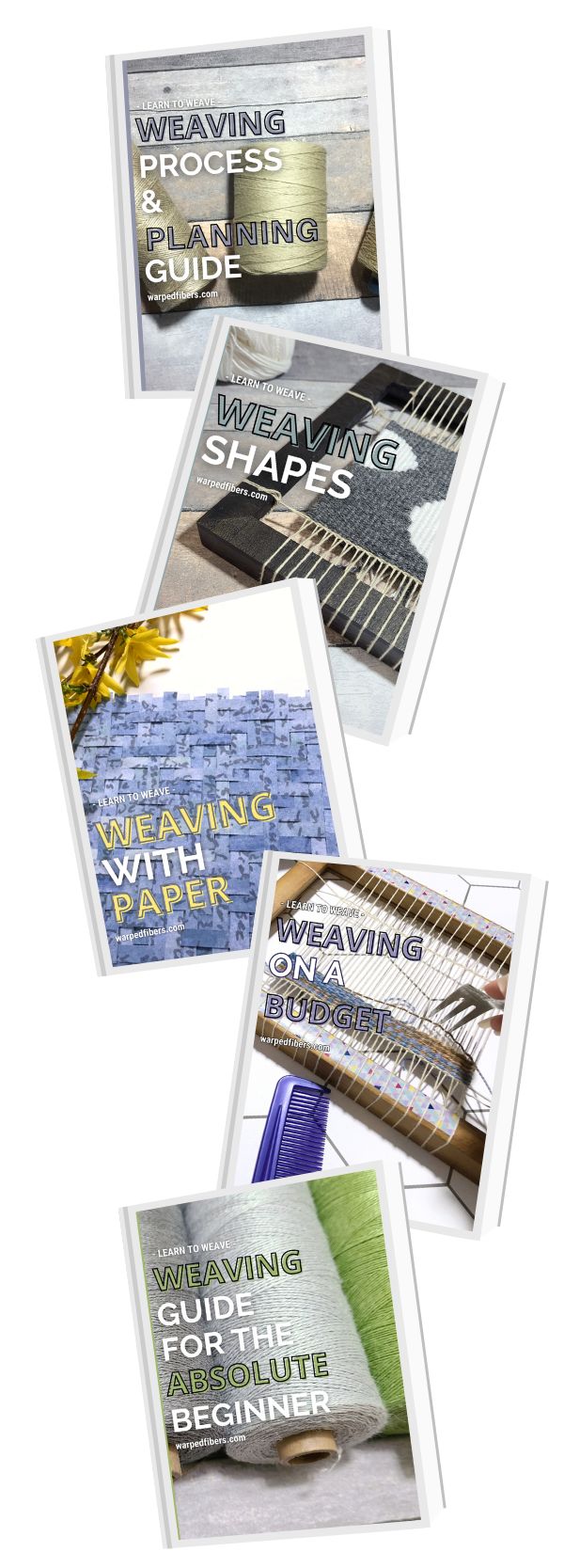
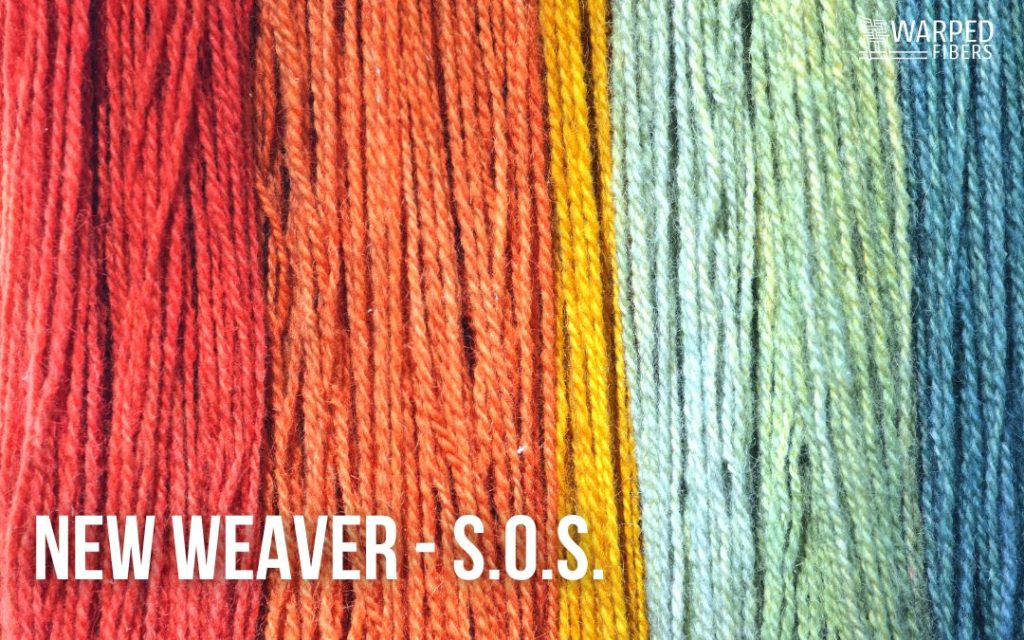

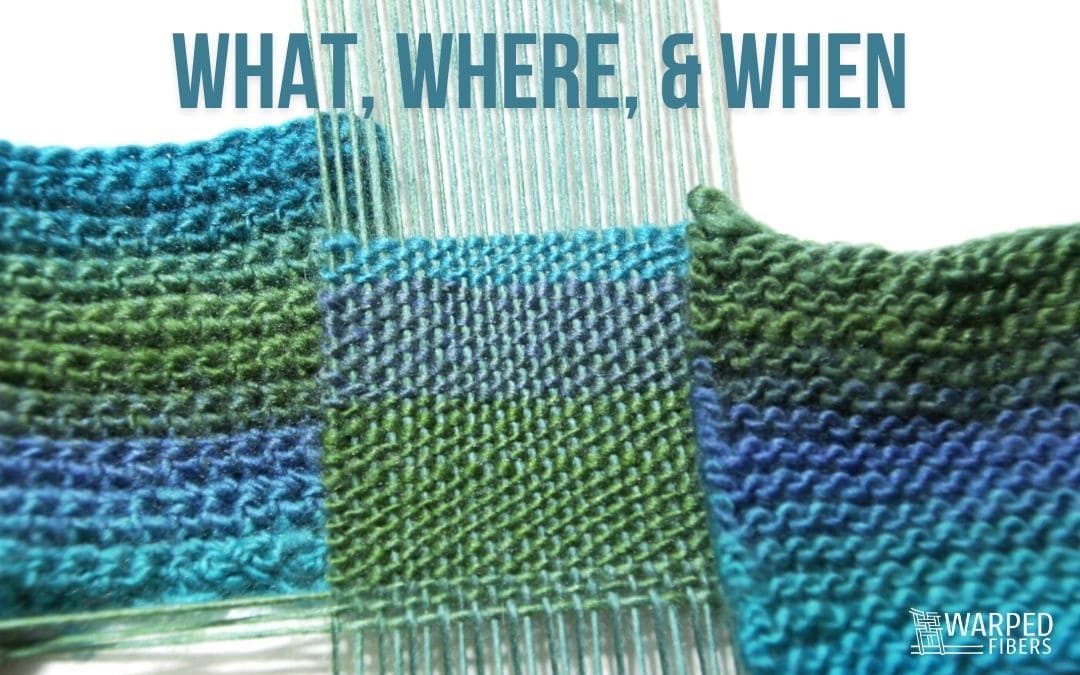

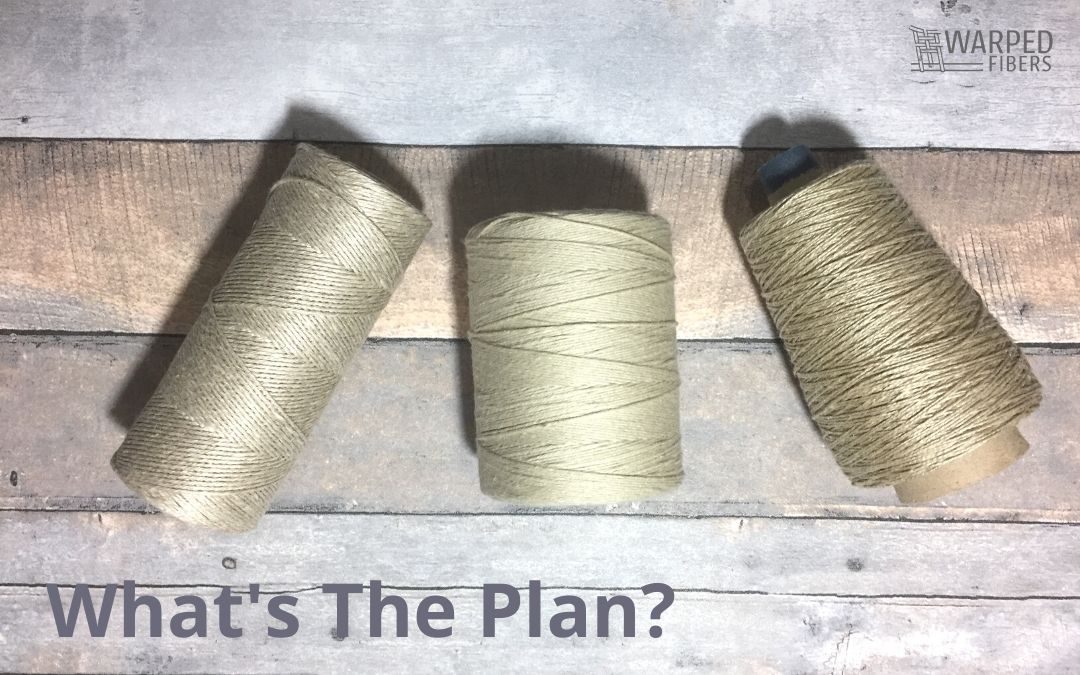

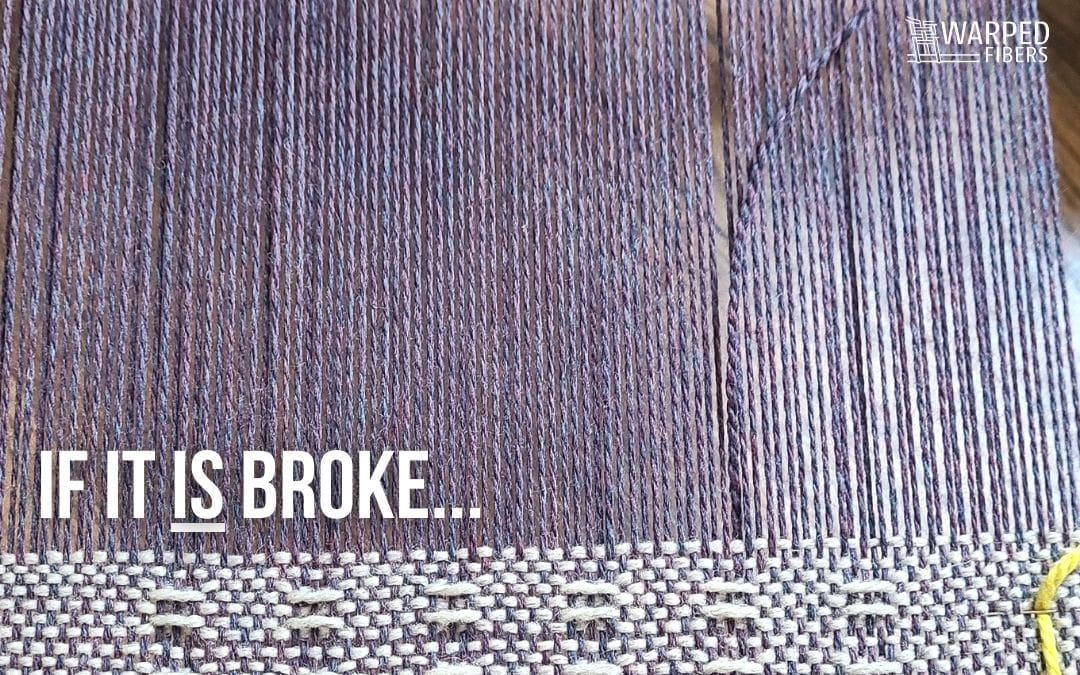

How wide should cotton fabric be cut for weft. I’m using a twist and twine loom
Weft thickness really depends on the warp sett. Check out my post on EPI and making a mini loom to help you experiment!